Temple Layout - Situated on the northern bank of the river Ketila, this temple is home to a magnificent 5-tiered Rajagopuram. It is also the birthplace of Sundaramurthy Nayanar. Adjacent to the Rajagopuram, on the left-hand side, there is a depiction of Sundarar accompanied by his two wives - Paravai Nachiyar and Sangili Nachiyar. In the scene, a white elephant stands in front of them, while Sundarar is portrayed holding a rhythmic instrument. According to belief, when Sundarar left his earthly life for Kailasha, he journeyed on a white elephant. As a result, it is customary to represent Sundarar seated on an elephant.
The courtyard beyond the gateway houses an armoured dwaja-sthambam, Balipeetam, and Nandi, creating a grand and majestic entrance to the temple. The 'Kodimara' Vinayakar is a sight to behold, exuding beauty and grace as 'Sundara' Vinayakar. Moving into the second prakaram, one can marvel at the well-preserved 'urchava' idols of the four nayanmars, Sundarar with his two spouses, Nataraja, Sivakami, Vinayaka, and Muruga with Valli & Deivanai. The presiding deity Bhakta Janeswarar resides in the small sanctum, facing east, while the sun-rays fall on the deity from the 23rd to the 27th day of the Tamil month 'Panguni'. Additionally, the temple houses other sannidhis, including the Nataraja Sabha and a large Shivalinga worshipped by Narasinga Munaiyar.
The prakaram houses strategically placed sculptures of various deities and figures such as Polla Pillaiyar, Sekkizhar, the four nayanmars, Sixty-three Nayanmars, Valampuri Vinayaka, Somaskanda, Arumuga, Yugalingam, and Gajalakshmi. Additionally, the wall of the sanctum features sculptures depicting various scenes from the life of Chandesura, including Chandesura milking a cow, his father climbing a tree, Chandesura performing 'thirumanjanam', and him cutting off his father's feet and receiving Shiva's mercy. Opposite the Navagraha sannidhi, there is a Sukra lingam, which was worshipped by Shukra, the planetary god for Venus. Special pujas are performed to this Lingam on Fridays. Furthermore, the positioning of Surya, the sun god in the navagraha sannidhi, is typically facing east, but in this particular temple, Surya is positioned facing west, towards the 'Moolavar'. Additionally, there is a sannidhi for Bhairava, adding to the rich array of sculptures and deities present in the prakaram.
Sundaranayaki/Manonmani, the female deity resides in a separate temple facing east. A pillared mandapam is seen in front of this sannidhi. Fitting to Her name, Sundaranayaki is beautiful in a standing posture with Her four divine hands. On the northern side of circumambulating path, is the 'Sthala vruksham' - 'naaval' (jamun) tree giving the town its name Navalur. This tree is associated with the star 'Rohini', so it is considered auspicious for those born under this star to visit and worship the deity here on the day of Rohini nakshathira.
Mahavishnu - Hiranyakashipu, the father of Prahlada, was known for his harassment of the devas, leading them to surrender to Maha Vishnu and seek his protection from the tyrannical demon king. Having received a boon from Brahma, Hiranyakashipu believed himself to be invincible, as no man, god, or animal created by Brahma could kill him. Furthermore, he could not be killed during the day or night, in heaven or on earth, with a weapon, inside or outside his house. In order to vanquish Hiranyakashipu, Maha Vishnu sought the blessings of Bhakthajaneshwarar at Tirunavalur and was granted the necessary powers. Subsequently, Maha Vishnu took the form of Narasimha, a half-man, half-lion incarnation, and emerged from a pillar to slay Hiranyakashipu. Within the temple premises, there is a separate shrine, facing east, dedicated to Maha Vishnu, situated in the northern side of the prakaram. Here, a magnificent 6-foot idol of Mahavishnu, known as Varadaraja Perumal, is alongside his consorts Sridevi and Bhoodevi. This sannidhi is on an elevated platform and is flanked by two 'mandapam's in the front, accessible by steps. Opposite the sannidhi of Maha Vishnu, the deity 'Garudan' is also present, adding to the sanctity and grandeur of the temple complex.
Dakshinamurthy assumes a standing position in front of a bull (rishabam), with his right hand placed on the bull and holding a manuscript in his left hand.
Tirupugazh sthalam - The 14th century BC Tamizh poet Arunagirinathar of Thiruppugazh fame also came to Tirunavalur and sang in praise of Muruga. One song is found in the Thiruppugazh collection, in praise of tirunavalur Muruga who faces east, in a standing posture, with 4 merciful hands and with his two beautiful consorts, Valli and Deivaanai.
The 2 sacred water bodies of this temple are ketila and gomukhi. ketila river is 1 km south of the town and gomukhi is to the west of the temple.
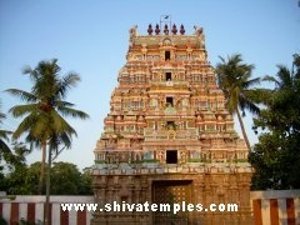 Magnificent Gopuram
Magnificent Gopuram Dwajasthambam, balipeetam, nandi
Dwajasthambam, balipeetam, nandi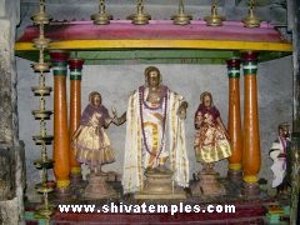 Sundarar with his two wifes
Sundarar with his two wifes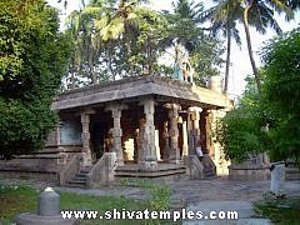 Way to Ambal Sannidhi
Way to Ambal Sannidhi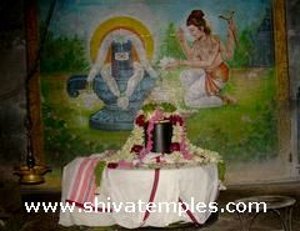 A Shivalingam in the prakaram
A Shivalingam in the prakaram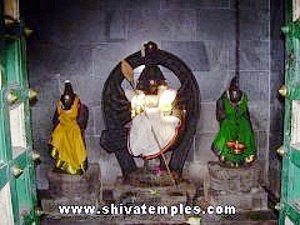 Muruga with his two consorts
Muruga with his two consorts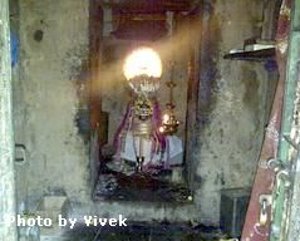 Bhakthajaneswarar
Bhakthajaneswarar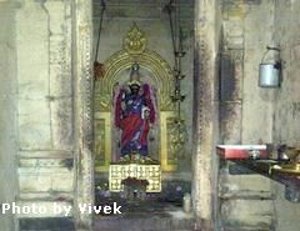 Devi Manonmani
Devi Manonmani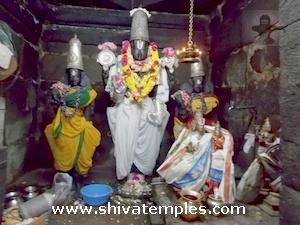 Varatharaja Permual with Sreedevi, Bhoodevi
Varatharaja Permual with Sreedevi, Bhoodevi